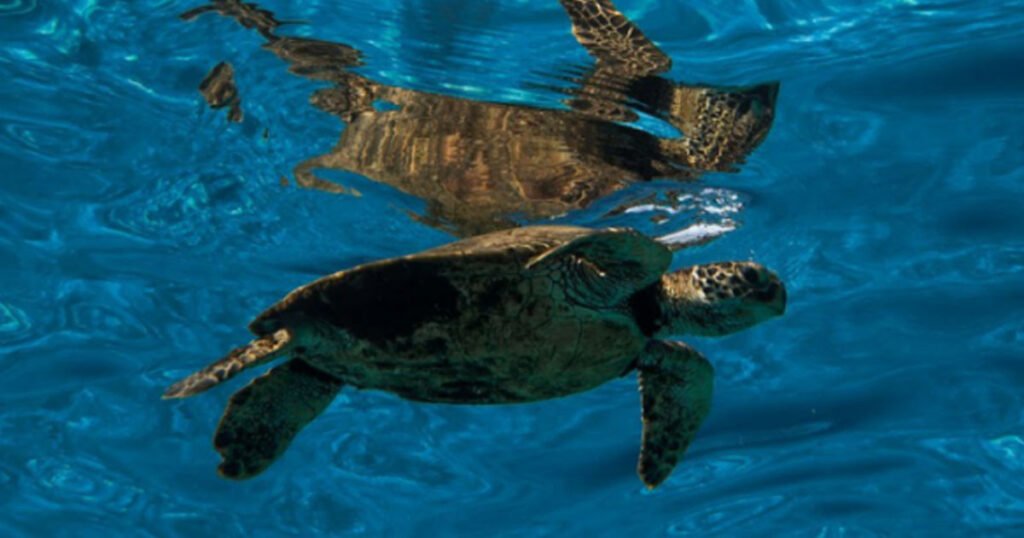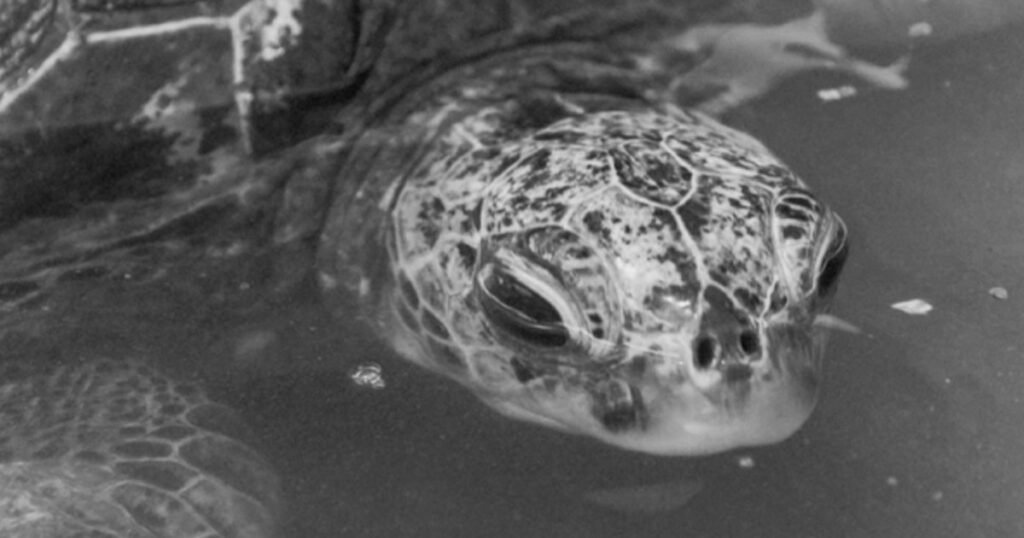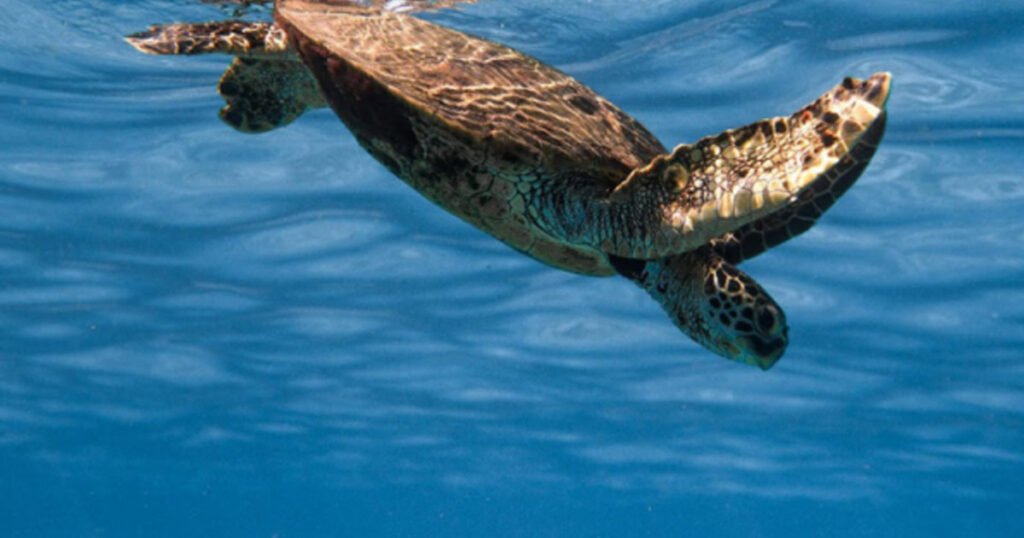Is a turtle a amphibian? Turtles are reptiles like snakes, crocodiles, and lizards, not amphibians. Turtles, unlike amphibians, have scaly skin and a long neck. They fertilize their eggs internally, do not reproduce in water, and their hind legs are not long or designed for jumping.
Now we are going to discuss: is a turtle an amphibian and why?
What Is An Amphibian?
“Amphibians are cool animals that can live both in water and on land. They are like nature’s explorers! You might have heard of frogs, toads, salamanders, and newts – well, they are all types of amphibians. These special creatures have smooth, wet skin that helps them breathe through their skin, and many of them start their lives as tadpoles in water, then grow up to hop or crawl on land.
Amphibians play an important role in keeping ecosystems healthy by eating insects and being food for other animals. However, because they have sensitive skin, they are also affected by changes in the environment, like pollution and habitat damage. So, it’s super important to protect these great animals and their homes!”
Table of Contents
Is a Turtles Reptile or Amphibian?
Turtles are reptiles, not amphibians. Reptiles, like turtles, snakes, lizards, and crocodiles, are marked by having dry, scaly skin, and they lay eggs on land. They also breathe air using gills, unlike amphibians, which often have moist, smooth skin and lay eggs in water. So, while turtles might spend a lot of time in or near water, they belong to the reptile family rather than the amphibian family.
Is a Turtle a Amphibian?

Amphibians are animals that can live on both land and water. Turtles are reptiles, not amphibians, although they live in or near water. Reptiles are terrestrial vertebrates with a scaly hard shell. Amphibians have a smooth, scaleless skin that is permeable to water.
Turtles have a hard, non-permeable shell. Turtles and other reptiles molt their skins. The procedure is repeated in bits rather than all at once, as with snakes. They lay hard-shelled eggs, thus it is not required that they lay them in water like amphibians.
Turtles are classified as Reptilia, specifically Phylum Chordata. Turtles are reptiles because they have four legs, a cold-blooded metabolism, and scales that cover their bodies. Their lungs, like those of all other reptiles, help them breathe. There are several turtle species, including common snapping turtles, spotted turtles, Blanding’s turtles, painted turtles, and wood turtles.
Is a Green Sea Turtle an Amphibian?

No, a green sea turtle is not an amphibian; it is a reptile. Green sea turtles belong to the reptile family Cheloniidae, along with other sea turtle types. Like all reptiles, green sea turtles have dry, scaly skin, lay eggs on land, breathe air using their lungs, and control their body temperature externally. They spend most of their lives in the ocean but return to beaches to lay their eggs, which is a characteristic habit of reptiles, not amphibians.
Differences Between Amphibians And Reptiles
Here are some key differences between amphibians and reptiles:
Skin Texture and Moisture
- Amphibians usually have moist, permeable skin, while snakes have dry, scaly skin.
- Amphibians often need to stay near water or keep their skin moist to avoid dehydration, while reptiles have adaptations to conserve water and can live in drier environments.
Reproduction
- Most amphibians lay eggs in water, and their young undergo a metamorphosis from aquatic larvae (like tadpoles) to terrestrial adults.
- Reptiles lay eggs on land, covered by shells, and the offspring hatch as miniature versions of the adults. Some reptiles, like certain snakes and lizards, give birth to live young instead of laying eggs.
Body Temperature Regulation
- Amphibians are ectothermic, meaning they depend on external sources of heat to regulate their body temperature. They bask in the sun or seek shade to change their temperature.
- Reptiles are also ectothermic but have more efficient systems for regulating body temperature. They can be found in a wider range of habitats, including deserts and tropical trees.
Respiration
- Amphibians usually breathe through their skin as well as with lungs, while some also have gills as larvae. They need moist surroundings for efficient respiration through their skin.
- Reptiles breathe solely through the lungs, with no potential for respiration through the skin. They have changes such as more efficient lungs for breathing air.
Life Cycle
- Amphibians undergo metamorphosis, starting as aquatic larvae with gills and later changing into terrestrial adults with lungs.
- Reptiles usually do not undergo metamorphosis. They hatch from eggs (or are born live) as miniature versions of their parents and grow without major changes in body form.
Understanding these differences helps us understand the diversity of life and how different species have adapted to their environments.
Is a Turtle a Amphibian or a Reptile- Why?

Turtles are classified as reptiles due to several key traits they share with other members of the reptile family:
- Dry, Scaly Skin: Turtles have tough, protective shells made of bone and covered in scales. This skin helps avoid water loss and protects them from the environment, a common trait among reptiles.
- Cold-blooded: Like other reptiles, turtles are ectothermic, meaning they depend on external sources of heat to regulate their body temperature. They bask in the sun to warm up and seek shade or water to cool down.
- Laying Eggs on Land: Turtles reproduce by laying eggs on land, a trait shared by most reptiles. They dig nests and bury their eggs in the sand or dirt, where they incubate until hatching.
- Breathing with Lungs: Turtles breathe air using lungs, another trait typical of reptiles. They surface to breathe and can hold their breath for extended times underwater.
- Internal Skeletal Structure: Turtles have an internal skeletal structure made of bones, consistent with other reptiles. This structure offers support and protection for their bodies.
These characteristics align turtles with other reptiles like snakes, lizards, and crocodiles rather than amphibians, which have unique features such as moist, permeable skin and usually lay eggs in water.
Are Turtles Cold-Blooded?
Yes, turtles are cold-blooded creatures! But what does that mean exactly? Well, it means they rely on outside sources to warm up their bodies. Picture yourself feeling the sun’s warmth on a chilly day – that’s what turtles do too! They love to soak up the sun’s rays to warm themselves up.
But if it gets too hot, they’ll find a shaded spot or even take a dip in the water to cool down. Unlike us, they can’t make their heat like warm-blooded animals such as us people or furry friends like dogs and cats. Instead, they change their body temperature by moving around to different spots with the right temperature. So, next time you spot a turtle sunbathing on a rock, remember, it’s not just getting some rays for fun—it’s keeping warm!
Read More: Does Turtles Eat Frogs: A Complete Guide
Conclusion
So, is a turtle an amphibian? A turtle is not an amphibian; it’s a reptile! Remember, amphibians like frogs and salamanders live part of their lives in water and part on land, while reptiles like turtles have dry, scaly skin and lay eggs on land. Turtles enjoy basking in the sun, just like other animals, to warm up their bodies because they’re cold-blooded.
So, if you ever come across a turtle sunbathing by the water, you can admire its reptilian features and know it’s not hopping between worlds like an amphibian but enjoying its reptile life instead!
